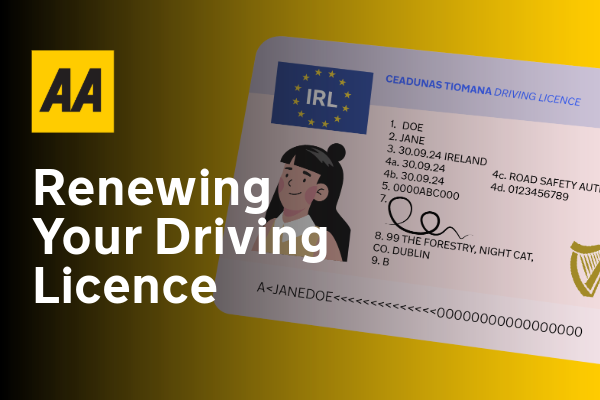Winter can be a trying time for motorists. Once the dark evenings, cold temperatures and stormy weather are upon us, we are much more likely to suffer a car breakdown.
Storms can bring down trees while crashes are much more common, and wet weather can cause traffic congestion by itself, as motorists wisely heed advice to reduce their speed.
With that in mind, you’ll want to make sure that your car is equipped for the worst an Irish winter can throw at us. Here is a handy car check guide to get you and your car ready.
1. Check your tyre pressure and tread depth
It is important to know the correct tyre pressure for your car and check them at least every two weeks using a good-quality gauge or garage airline. While the minimum legal requirement for tyre tread depth is 1.6mm in Ireland, AA Rescue recommends replacing your tyre when the tread depth falls below 3mm. We also advise to pay particular attention to your tyre pressure as cold weather can cause it to drop.
If there is one particular tyre that you find yourself having to top-up regularly, it may have a slow puncture. Remember to check your spare tyre too!
2. Ensure your battery is working correctly
Batteries generally should be replaced every five years – ensuring your battery is replaced before it reaches its life expectancy could save a great deal of inconvenience and time at the side of the road. If your car is struggling to start it’s usually a sign that the battery is weak. That will certainly catch you out when weather is colder as batteries have to work harder in low temperatures.
3. Check your coolant and antifreeze
Checking that you have the right amount of coolant is an essential part of winter car maintenance, if necessary top it up with the correct type of antifreeze. Make sure that you use the appropriate antifreeze that is recommended by your car’s manufacturer.
4. Carry a toolkit & safety kit
Use your handbook to locate the basic toolkit for your car; it should contain a jack and wheel removal tools at least. Familiarise yourself with the jacking points used to lift the car safely.
If locking wheel nuts are fitted on your car make sure that the toolkit includes the key or removal tool.
Also prepare an in-car safety kit to ensure you’re equipped for all winter driving conditions. This should include a de-icer and scraper, shovel, demisting cloth, jump leads, torch, necessary medication, warning triangle, AA Membership card, sand/ salt or other traction aid and so on.
5. Check the engine oil level
Check the engine oil dipstick at least every fortnight and before any long journey. Have the oil and filter changed at recommended service intervals using oil of the correct specification. High oil consumption can indicate engine problems, in that case seek assistance.
6. Make sure your wiper blades are not worn
It is important to check your wiper blades and replace them when necessary to ensure you have a clear view of the road. Wiper blades wear down over time and smear the windscreen if they become worn. The average set of wiper blades should last about a year, so if your wiper blades are due an upgrade, now is a good time to have them replaced.
7. Check your windscreen wash is at the correct level
Check your windscreen wash and top up regularly – it’s a legal requirement that the system works. Use a good screen wash additive through summer and winter – water alone won’t clear oily road grime and freezes more readily in winter.
8. Check for any damage on your windscreen
Check regularly for stone damage as this can impair vision or distract attention. Minor chips can grow and crack the glass but many can be repaired by a windscreen specialist.
The glow of winter’s low sun can be dazzling and dangerous to drive in when your windscreen is smeared and dirty. So make sure to give your windscreen a good clean inside and out before driving.
9. Keep car lights clean and working
See and be seen. Keep all lights clean and working – don’t forget indicators, brake and fog lights. In bad weather wipe them over with a damp cloth during driving breaks. See our other blog post about using your car lights correctly here.
10. Check your power steering fluid level
Ensure that the fluid reservoir is checked at every service. As part of your own winter car maintenance check it yourself once a month. Top up only using the correct hydraulic fluid as advised in the car handbook.
11. Check bodywork is in good condition
Deal promptly with damage to bodywork to prevent rust setting in. Many cars have extended bodywork warranty schemes, which may require annual inspection at the dealer. Check that any previous owner has kept records up to date.
12. Prevent car locks and door seals from freezing
A thin coat of polish or Vaseline on rubber door seals can stop doors freezing shut – and a squirt of WD-40 can do the same for door locks.
It’s not always possible to prevent a car breakdown, no matter what checks you carry out. With the AA App you can report a winter breakdown with the click of a button, so that you’re never left stranded. Get your quote online and become an AA member today.











